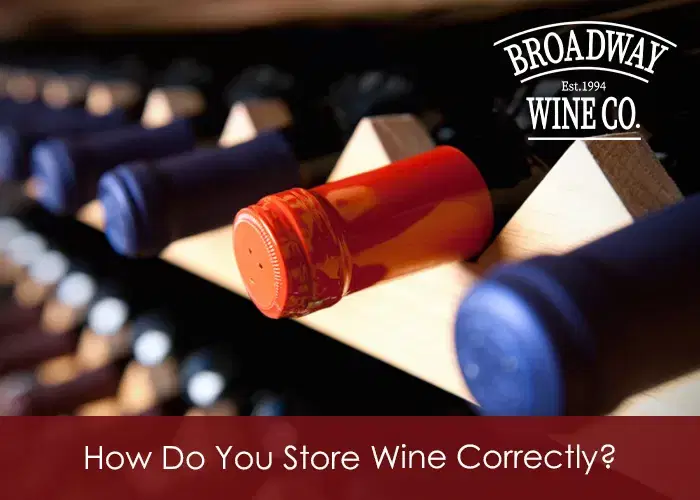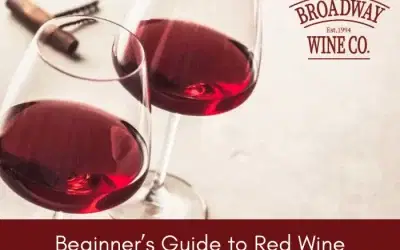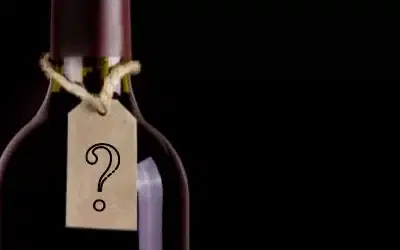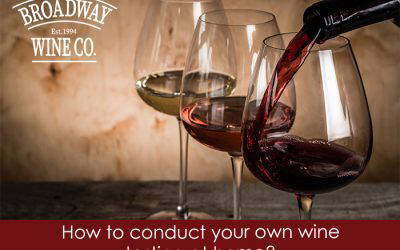One of the best things about wine is discovering new vintages that you like and growing your own collection. But it isn’t only about finding and buying the best wines that suit your tastes, it is also important to consider how you are storing your wine. This is because certain factors can affect how your wine tastes and how well it ages.
At Broadway Wine Company, we love our wine and we know you do to and want to help you to protect your wine so that you can keep it tasting its best. We have answered a few questions below to help you store your wine properly.
What temperature should wine be stored at?
Temperature can have a big impact on wine and is essential to ensuring that its full flavour and aromas can be enjoyed. As a general rule, wine should be stored at around 11⁰c – 16⁰c. They should never go over 24⁰c as this can cause the wine to oxidise and which can negatively affect the wine.
To get a bit more specific, red wines are best when stored at warmer temperatures. Full-bodied reds are ideal when kept at 17⁰c – 19⁰c whereas light to medium-bodied reds should be kept at around 12⁰c – 16⁰c.
White wines are known for being best kept at a cooler temperature, approximately 5⁰c – 12⁰c. Similar to red wine, this is dependent on grape type. For example, dry whites such as chardonnay and sauvignon blanc should be kept at around 9⁰c, whereas sparkling wines and champagnes are ideal at around 7⁰c.
Fluctuation in temperature should be avoided as this can be damaging to the wine, especially with extreme changes in temperature. These can cause the cork to shrink and then expand, allowing oxygen into the bottle which will have negative effects on its quality.
Is light bad for wine?
Exposure to light can be detrimental to both a wine’s taste and smell. Sunlight is the worst and so wine should never be stored where it will be exposed to sunlight. A study by WRAP has shown that UV light causes a chemical reaction in wine that can alter its flavours and aromas. The tannins present in wine can help stop this degradation. Because red wines tend to have higher levels of tannins, they are less susceptible to this chemical reaction than white wines, however all wines will experience a decline in its quality when exposed to too much light.
Different types of light can have different levels of effects on your wine. Your best option is using LED lights as they do not emit heat or UV light and so will have the least amount of impact on the quality of your wine.
Should I store the bottle on its side?
Storing a wine bottle on its side is best for bottles with corks. By keeping the bottle in its side, the wine can stay in contact with the cork, keeping it moist. This is particularly key for long-term storage because allowing the cork to dry out can cause it to shrink and crack. Subsequently, this can cause seepage and allow oxidisation and premature ageing.
Although screw-top wine bottles don’t necessarily need to be stored on their sides, it would still be a convenient, space-saving way to store your bottles and can offer easy access.
It is good to bear in mind that if wine is stored on its side, it is best to stand it upright before opening to allow any sediment that has spread throughout the bottle to fall back down to the bottom. This can help avoid any sediment making its way into your glass and affecting your drinking experience.
We have covered a few questions that we thought were most important when it comes to storing wine. If there is anything else that you would like answered, get in touch and we will do our best to help you with your queries.
Why not check out our wide range of wines, and stock up on your favourite vintages, putting your new ‘wine storage’ knowledge into practice? Don’t forget that we offer free delivery to local areas on orders over a minimum order value. You can find out more on our Delivery page.




